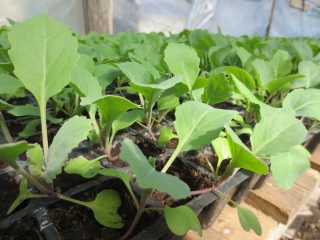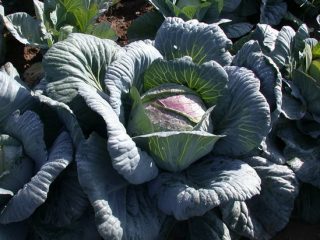Content
China is the birthplace of Chinese cabbage. There, “petsai” (as the Chinese call it) has been cultivated since ancient times. The Russians recognized cabbage not so long ago. Not all gardeners yet grow healthy vegetables on their plots. But in vain, because the heads of cabbage and leaves contain a huge amount of vitamins and minerals. In addition, cabbage can be harvested not once, but twice per season, even in a sharply continental climate.
Chinese cabbage Designed for long-term storage, while the beneficial properties are practically not lost. To get a rich harvest, you need to know exactly when and how to plant Chinese cabbage in open ground and follow agrotechnical standards.
Popular varieties
Breeders have created many varieties and hybrids of Pekinka. There are cabbage, semi-head and leaf varieties.
The most popular Chinese cabbage varieties are:
- Asten;
- Wineglass;
- Vorozheya;
- Magician;
- Manoko;
- Nika;
- Cha-cha.
The heads of cabbage are juicy, the leaves are tender. Thick white veins are considered the most nutritious.But the main thing that vegetable growers value this variety for is its resistance to cabbage blossoms. It is this that, in fact, is the scourge of vegetables; some gardeners are afraid to engage in cultivation.
Among leaf varieties, “Khibinskaya” seeds are most often requested. This cabbage yields a good harvest both in the garden and in the greenhouse.
Which variety of cabbage to choose is up to you, it all depends on your taste preferences and climatic conditions of the area.
How to decide on deadlines
Even a vegetable grower with extensive experience in growing this cultivated plant will not give you an exact date for sowing Chinese cabbage in open ground.
There are many reasons for this:
- First of all, this concerns the climatic characteristics of the region. Mother Russia extends over a huge distance, spring begins at different times in the south, north, west and east. This means that in order to know when to plant Chinese cabbage in open ground, you need to focus on the climate of your region.
- Why is it still impossible to give a single “recipe” for the time of sowing this valuable vegetable? The fact is that there is a huge variety of varieties that differ in terms of ripening: early ripening, mid-ripening, late ripening. This means that from the moment the seeds are sowed to technical ripeness, a different number of days will pass.
- The third reason is the choice of planting method. If you need to get early greens for the table, you will have to grow seedlings. If the healthy vegetable is intended for autumn-winter consumption, then the seeds are sown immediately in open ground.
We hope that you have considered the nuances of choosing the right time for yourself and understood when you will start working on pekinka and when to sow in open ground.
Seedling method
At growing Chinese cabbage seedling method, it should be taken into account that seedlings must grow for at least 30 days before planting in open ground. If you live in the southern regions of Russia, then the snow melts in April, the earth begins to warm up, and by the end of April you can prepare the beds. This means that the seeds can be sown for seedlings at the end of March.
In regions with a more severe climate, spring comes later; frosts are often likely to return even in early June. When to sow Chinese cabbage in the ground? Let's do the math. We subtract 30 days from the beginning of June, which gives us the end of April – beginning of May.
If there is a reliable greenhouse, then containers with cabbage seedlings can be placed there, then sowing the seedlings can be done in April.
It is better to grow seedlings without picking, because when transplanting the roots are damaged, the cabbage slows down its growth, and therefore crop loss cannot be avoided.
Chinese cabbage is a short-day vegetable. When growing seedlings, this fact must be taken into account. In addition, the room where the seedlings are located should be cool. Otherwise, Chinese cabbage will stretch out and it will be difficult to plant. If the daylight hours when growing seedlings were more than 12 hours, then some of the plants may go into bloom after planting.
Planting seedlings in the ground
When and how to plant seedlings in open ground? As soon as the earth warms up and begins to crumble in your hand, you can begin work. By the time of planting in the ground, cabbage should have at least 4-5 true leaves and a well-developed root system.
We choose a place so that it is well lit for the first half of the day, and in the second half of the day the plantings are shaded. Compost and ash are added to the soil before digging. After digging, the holes are prepared. The distance between plants should be at least 40 cm, between rows - half a meter. This fit will ensure ease of maintenance.
How to plant seedlings in open ground? If peat pots or tablets were used for cultivation, the plants are planted directly in them. If in cups, then they are cut so as not to damage the root system and placed in the hole. After planting, the plants are watered with water.
When to sow seeds in the ground
Now let's figure it out when to sow cabbage seeds directly into the ground? This is a serious point in growing Chinese cabbage. Most often, sowing seeds in the ground is used to obtain vegetables for storage to be eaten in the fall and winter.
To decide when to sow seeds, you should take into account climatic conditions. If frosts begin in early September, then sowing time is mid-July. Late varieties cannot be grown. In mild climates, late-ripening Chinese cabbage is also suitable.
Sowing seeds
By the time it is time to sow the seeds, some of the beds are cleared. Plantings should not be placed in places where cabbage relatives grew. This will help avoid many diseases. Beijing works well after onions, lupines, phacelia, and carrots.
The ridge is dug up, fertilized, and markings are made. Gardeners approach the question of how to sow cabbage in different ways:
- sow seeds in holes;
- into the furrow.
If cabbage is planted with seeds, then first a small ridge is raked and holes are made on it. Place 2-3 seeds in each, cover with soil and pat with your palm to ensure the connection of the grain with the substrate. So, the seed germinates better.
To prevent pests from attacking the emerging tender sprouts: cruciferous flea beetles, cabbage butterflies, slugs and snails, place plastic bottles with an open lid on top. After two weeks, the plants are thinned out, leaving the strongest sprout in the hole.
When sowing seeds in a furrow, the seeds are sown densely, about 10 cm apart. In this case, you will have to thin out more often. For the first time when the second leaf appears. Then as the plants grow. Seedlings can be used for salads. As a result, the distance between the heads of cabbage should remain at least 40 cm.
How to grow Chinese cabbage in Siberia, video:
Outdoor care
Regardless of how Chinese cabbage was grown, after planting in open ground, it is cared for in the same way. The plant is unpretentious. The main thing is to water, loosen, weed on time weeds.
Experienced gardeners relieve themselves of routine work. They mulch the soil under the cabbage, the amount of watering is reduced, and weeds are practically absent. Mulch, when overheated, saturates the plant with nutrients.
Causes of coloration
How to plant cabbage in open ground to get a rich harvest of leaf or cabbage varieties without much loss? When to sow seedlings and seeds to prevent cabbage from blooming? After all, it is not planted to obtain seeds! You can no longer get a head of cabbage from a flowering plant like the one in the photo.
Let's try to talk about the most common mistakes:
- Most often, the cause of flowering lies in the wrong timing of planting seeds for seedlings and planting them in open ground. This means that the plant did not have time to develop while the daylight hours were of the appropriate length. If you are not confident in your abilities, try to select hybrids, they are resistant to shooting.
- Choose early-ripening varieties; they simply do not have time to form an arrow.
- Thickened Chinese cabbage does not receive the necessary space and nutrition. Most likely, some of the crops will bloom. This means that thinning is a necessary part of plant care.
- When cabbage is planted in cold soil, the plant freezes for a while and lags in growth. It doesn't have time mature in the allotted time and, as a rule, throws out the arrow.
- Chinese cabbage shoots in extreme heat. Temperatures above 22 degrees are detrimental to proper growth. This problem is easy to solve: create an artificial shadow by throwing thick fabric over the plantings.
- Flowering may appear if the cabbage is ripe and not cut on time.
Conclusion
We hope that our advice on when to plant Chinese cabbage in the ground will be useful to our readers.
Growing Chinese cabbage in open ground is a fascinating activity. A vegetable planted in a timely manner will delight you with a rich harvest. In addition, it provides Russians with tasty vegetables in summer and winter. Heads of cabbage are stored for no more than three months.














